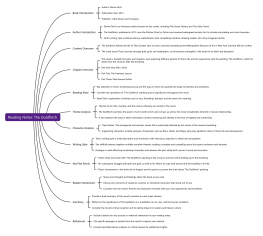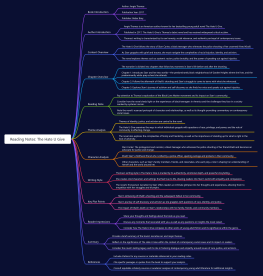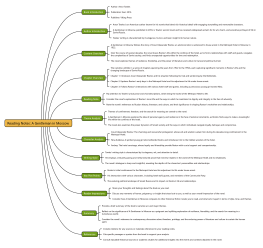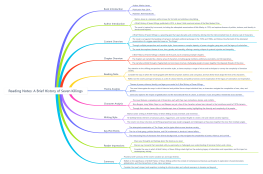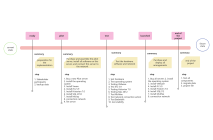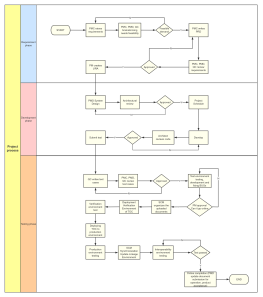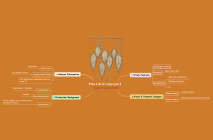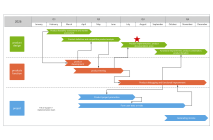
New Product Brainstorming
1 Report
This mind map on new product brainstorming outlines a comprehensive approach to generating and refining innovative product ideas. It begins with defining the purpose and objectives of the brainstorming session, emphasizing the importance of creativity and innovation. The process includes understanding market needs through market research, customer feedback, and competitive analysis to identify gaps and opportunities. Idea generation techniques such as brainstorming, mind mapping, the SCAMPER method, and provocation techniques are employed to stimulate creative thinking. Ideas are evaluated based on market potential, feasibility, competitive advantage, and alignment with company goals. A voting process helps prioritize and select the most promising ideas, which are then refined through further research, prototyping, and validation. The mind map also covers pitching and presentation preparation, engaging stakeholders for feedback and buy-in, and iterating on product concepts based on feedback. The conclusion summarizes the outcomes, including selected product ideas and an action plan for development, prototyping, and testing to bring the concepts to market. This structured approach ensures a systematic and effective brainstorming process, fostering innovation and successful product development.
Related Recommendations
Other works by the author
Outline/Content
See more
Introduction
Purpose
Define the purpose of the brainstorming session and its objectives for generating innovative new product ideas.
Overview
Provide a brief overview of the brainstorming process and its importance in fostering creativity and innovation.
Understanding Market Needs
Market Research
Review market trends, consumer preferences, and emerging needs to identify gaps or opportunities for new products.
Customer Feedback
Gather insights from customer feedback, surveys, and focus groups to understand pain points and unmet needs.
Competitive Analysis
Analyze competitors' products and strategies to identify areas where your company can differentiate and innovate.
Idea Generation Techniques
Brainstorming
Facilitate a brainstorming session with cross-functional teams to generate a wide range of ideas without judgment.
Mind Mapping
Use mind mapping techniques to visually organize and explore interconnected ideas and concepts.
SCAMPER Method
Apply the SCAMPER method (Substitute, Combine, Adapt, Modify, Put to another use, Eliminate, Reverse) to stimulate creative thinking and idea generation.
Provocation Techniques
Challenge assumptions and conventional thinking through provocation techniques such as "What if?" scenarios and role-playing exercises.
Idea Evaluation Criteria
Market Potential
Assess the market potential and demand for each idea based on market research, customer feedback, and industry trends.
Feasibility
Evaluate the technical feasibility, resource requirements, and scalability of implementing each idea within your organization.
Competitive Advantage
Consider the potential competitive advantage and differentiation factors that each idea offers compared to existing products or competitors.
Alignment with Company Goals
Ensure that each idea aligns with your company's mission, values, and strategic objectives.
Idea Selection and Refinement
Voting
Conduct a voting process to prioritize and select the most promising ideas based on their alignment with evaluation criteria and consensus among team members.
Idea Refinement
Refine selected ideas through further research, prototyping, and validation to enhance their viability and market appeal.
Concept Development
Develop detailed product concepts, including features, specifications, and potential value propositions, for selected ideas.
Pitching and Presentation
Pitch Preparation
Prepare compelling pitches and presentations for selected product ideas, highlighting their unique selling points, market potential, and competitive advantage.
Stakeholder Engagement
Engage key stakeholders, including executives, investors, and decision-makers, in review sessions to solicit feedback and buy-in for selected product concepts.
Iterative Feedback
Iterate on product concepts based on stakeholder feedback and refine pitches and presentations accordingly.
Conclusion
Summary
Summarize the outcomes of the brainstorming session, including selected product ideas, next steps for development, and key learnings for future innovation efforts.
Action Plan
Outline an action plan for moving forward with the development, prototyping, and testing of selected product concepts to bring them to market.

0 Comments
Next Page
